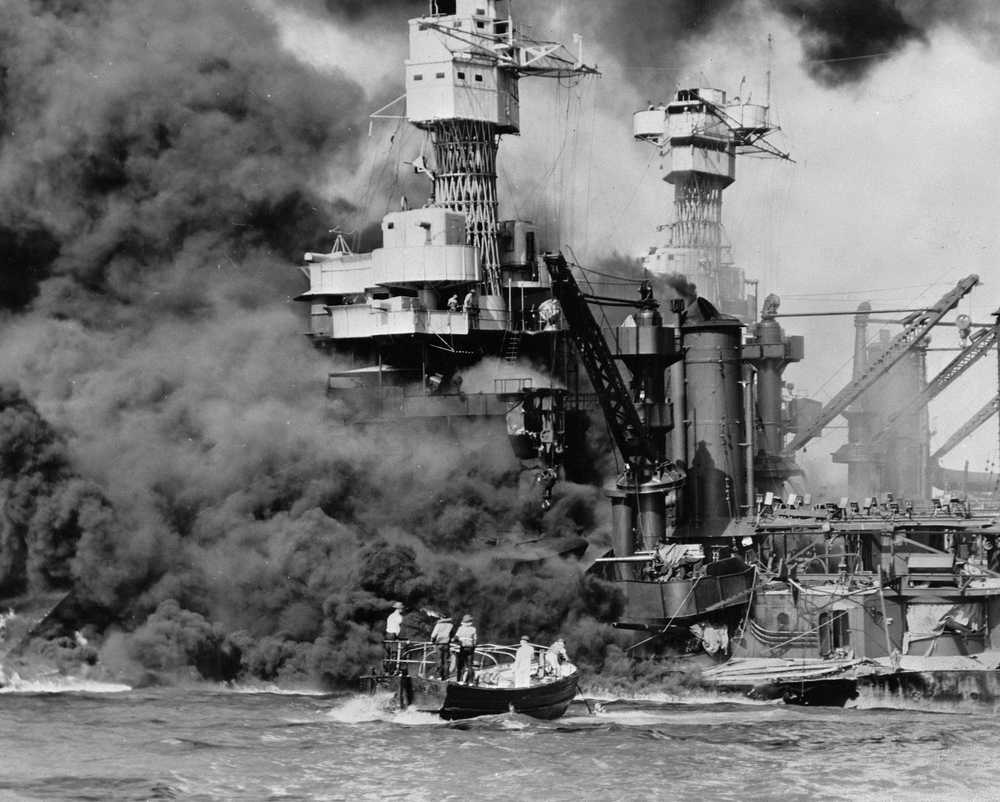ANCHORAGE — Ocean waters are taking a toll on a sunken mini submarine 5 miles off the entrance to Pearl Harbor.
The Japanese Imperial Navy vessel with a two-man crew — the first casualties of shots fired by U.S. forces in World War II — lies at 1,100 feet. The hull, a host for barnacles and coral, is coming apart in three places.
An underwater remote vehicle operated from the Okeanos Explorer, a ship of the National Oceanic and Atmospheric Administration, viewed the sub Wednesday 75 years to the minute after it was struck by a shell from a Navy destroyer, the USS Ward. The location is maintained as a gravesite, said Hans Van Tilburg, a historian with NOAA’s Office of National Marine Sanctuaries.
Visiting the site and livestreaming images at the precise moment it was struck raises awareness of the attack on defenses at Oahu, Van Tilburg said.
“The science objectives are what we’ve been doing for a while now — monitoring the status of what is an extremely historic property,” he said.
The Japanese mini subs were 78 feet long and 9 feet, 10 inches high. Batteries supplied power for single 600-horsepower electric motors. They could reach 20 knots. Their only armament was two torpedoes.
Five Japanese subs took part in the attack, according to the Office of National Marine Sanctuaries.
They were transported on the decks of full-size “mother” submarines. They planned to enter the harbor by closely tailing other ships to avoid anti-submarine nets. They were to surface and fire torpedoes at Navy ships during the Japanese aerial attack, then dive and escape.
At least one submarine reached the harbor. The USS Monaghan, a destroyer, spotted the intruder, rammed it and dropped depth charges.
A second sub washed ashore at Bellows Beach on east Oahu. The sub was put on tour to promote the sale of war bonds.
A third mini sub, with torpedoes intact, was found east of Pearl Harbor at Keehi Lagoon. The Navy raised it in 1960. The section containing the torpedoes was dumped at sea. The other two sections were restored and put on display in Japan.
A fourth lies in three pieces several miles from the entrance to Pearl Harbor. The sub had been scuttled with an explosive charge inside the vessel. It could have sunk after firing torpedoes outside the harbor at the USS St. Louis, said James Delgado, director of maritime heritage for the National Marine Sanctuaries program.
It also could have entered Pearl Harbor, fired torpedoes and escaped to West Loch on the west side of Pearl Harbor, Van Tilburg said. An explosion and fire in 1944 in the loch destroyed multiple ships preparing for the invasion of the Mariana Islands. Remains of the mini sub were found where debris from the West Loch Tragedy was dumped, Van Tilburg said. The Navy later raised the mini sub and moved it farther out to sea.
The Ward destroyed the fifth mini sub.
The morning of the attack, just before 4 a.m., as the Ward patrolled outside Pearl Harbor, another Navy vessel spotted a periscope. The Ward began searching, and more than two hours later saw a periscope and part of a conning tower behind a cargo ship, the Antares.
The Ward attacked at 6:53 a.m. A gun crew manned by members of the Minnesota Naval Reserve fired a 4-inch, 50mm shell that penetrated the conning tower and exited through the hull. The submarine flooded and sank.
The skipper of the Ward sent a report of the attack to the Naval Command on Oahu. Roughly an hour later, the devastating Japanese aerial attack began.
Mini subs were built in three sections. Since NOAA’s last visit to the site in 2014, the gaps have formed between the sections, cameras revealed Wednesday.
“It’s slowly deteriorating over time,” Van Tilburg said.

